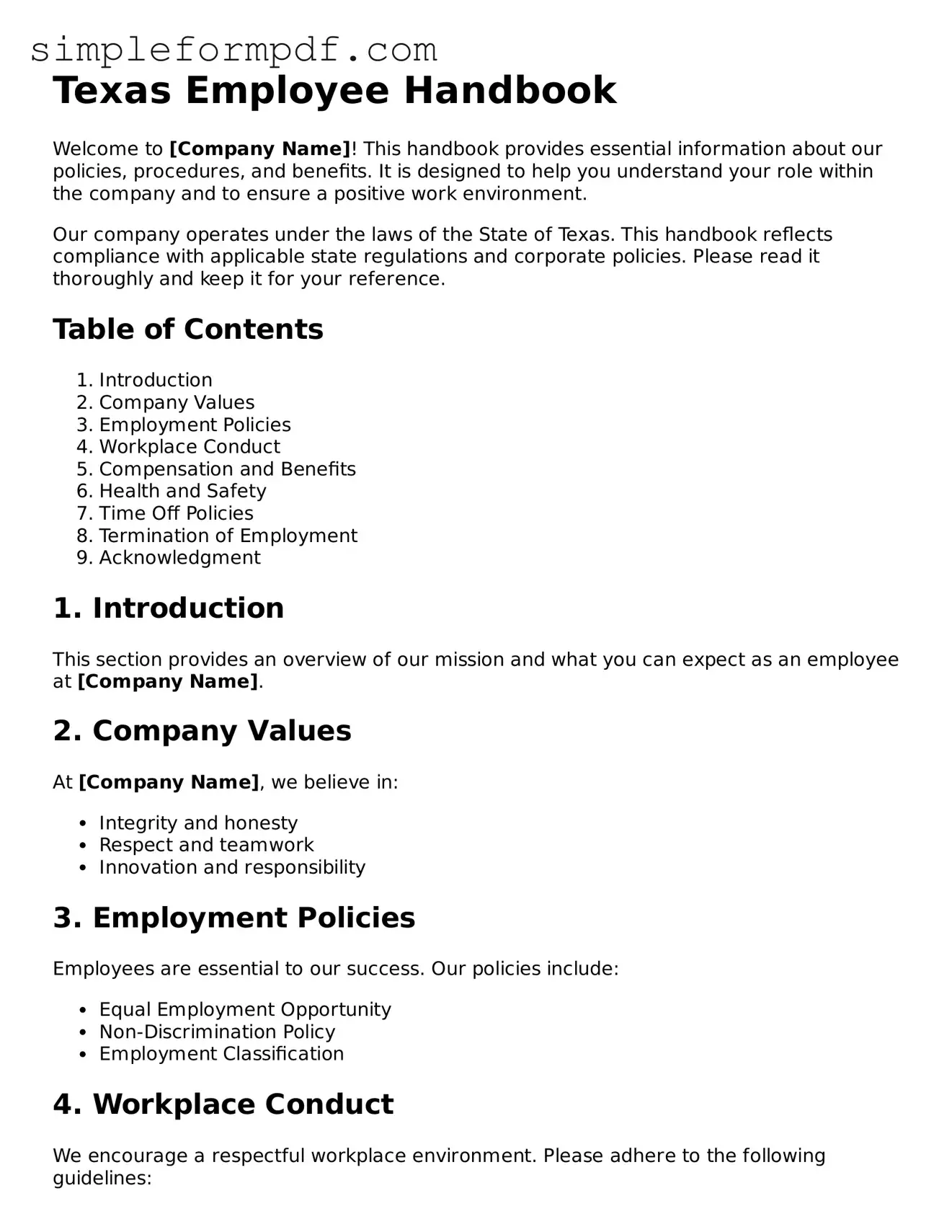Texas Employee Handbook
Welcome to [Company Name]! This handbook provides essential information about our policies, procedures, and benefits. It is designed to help you understand your role within the company and to ensure a positive work environment.
Our company operates under the laws of the State of Texas. This handbook reflects compliance with applicable state regulations and corporate policies. Please read it thoroughly and keep it for your reference.
Table of Contents
- Introduction
- Company Values
- Employment Policies
- Workplace Conduct
- Compensation and Benefits
- Health and Safety
- Time Off Policies
- Termination of Employment
- Acknowledgment
1. Introduction
This section provides an overview of our mission and what you can expect as an employee at [Company Name].
2. Company Values
At [Company Name], we believe in:
- Integrity and honesty
- Respect and teamwork
- Innovation and responsibility
3. Employment Policies
Employees are essential to our success. Our policies include:
- Equal Employment Opportunity
- Non-Discrimination Policy
- Employment Classification
4. Workplace Conduct
We encourage a respectful workplace environment. Please adhere to the following guidelines:
- Professional behavior is expected at all times.
- Harassment of any kind is strictly prohibited.
- Open communication is encouraged.
5. Compensation and Benefits
Your hard work and dedication are recognized through our compensation structure. Benefits include:
- Health insurance plans
- Retirement savings options
- Paid time off and leave policies
6. Health and Safety
Your safety is a priority. Our health and safety policies are designed to provide:
- A safe work environment
- Emergency procedures and training
- Access to health resources
7. Time Off Policies
Work-life balance is important. The following time off policies are in effect:
- Holidays observed by the company
- Sick leave policy
- Vacation leave regulations
8. Termination of Employment
Understanding the termination process is crucial. This includes:
- Voluntary and involuntary termination procedures
- Exit interviews
- Final paycheck information
9. Acknowledgment
Upon reviewing this handbook, please sign and date the acknowledgment form. This indicates that you understand the contents and agree to abide by the policies in this handbook.
Thank you for being a part of [Company Name]. We are excited to have you on our team!
